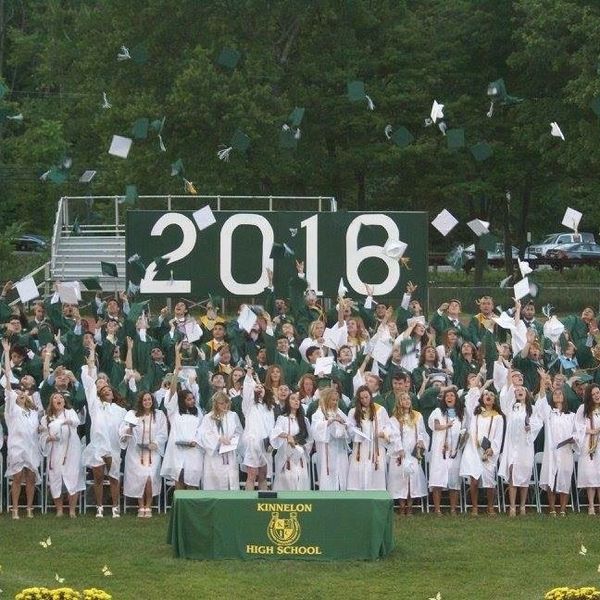In two of my previous articles, I gave an introduction to the basics of Nordic skiing, shown here: https://www.theodysseyonline.com/nordies-in-nutshe... and then, a guide to how Nordic racing works, here: https://www.theodysseyonline.com/nordies-in-nutshe.... Now I will dive a bit deeper into racing, this time focusing on the 'teen' age.
Very few states have a strong enough ski culture to promote Nordic skiing amongst high-school aged kids as a viable sport, even fewer actually offer skiing through the schools themselves. Even fewer still have school teams that are so competitive, they are able to retain the fastest athletes, rather than losing them entirely to a private club team. Minnesota is one of maybe a couple states that meets all those criteria.
Being a Nordic skier in Minnesota is a very unique experience. I challenge you to find a state with as big a population and spatial distribution of teams, that still feels so close and interconnected.
Nordic skiing in Minnesota is sanctioned by the state high school league (MSHSL) and treated just like any other school sport. In a country where very few states north and west have organized ski programs for kids, this proves to be a good model for getting young athletes on snow. The quality of the coaching may not always be as high, but there are always resources for athletes to improve.
In a state like Montana, the only access to competitive Nordic ski programs is through 'club' teams. Also, being Montana, these are few and far between. Only Bridger Ski Foundation in Bozeman has a very large, well-established racing club, and even they must travel for hours on end across state lines to race other clubs of equal competitiveness. On top of this, the team itself has a base coast of over $2,500, not including extra expenses.
What makes Nordic skiing in Minnesota so great especially, was the sheer number of participants. There are just under 100 (99 to be exact) schools with teams in the state, and roughly 73 of these teams are within the Twin Cities metro area. Considering there are no limits to roster sizes, the number of skiers competing on a school team in the state is close to 3,000 or more. With more kids on skis, the odds of a high number becoming highly successful racers increases dramatically.
I attended Minneapolis South High School. This is a school in the inner city with a long, storied history in nordic skiing. Depending on the season, we would have anywhere from 60 to 100 student-athletes on the team, and most had never skied prior to joining. But within 4 years, if they worked hard, they would be finishing very high in varsity races.
Our season would typically start in early November once Cross-Country Running and other fall sports ended. In the 2 weeks that coaches weren't allowed contact with athletes, the team captains would host 'captains practice' which consisted of running to Powderhorn Park half a mile away and playing team games like soccer and ultimate frisbee. Once the coaches practices started in mid-November, we would do a mix of team runs around the city, strength work and plyos either in the school or at Powderhorn, and for varsity the occasional rollerski day.
Our primary coaches were head coach Tony Aspholm and assistant Anne Jaeger. The other assistant coaches came and went like a revolving each year, but Tony and Anne were back every season. Tony acted more as a team manager who handled the logistical side of high school skiing while Anne did most of the workout structuring and planning.
The first snow usually fell in early December, and with it returning skiers would take a training trip up to the ABR trails in Ironwood, Michigan. This 2-day trip was a good opportunity to shake off any rust and get comfortable on skis again.
Throughout the winter, we would practice at Hiawatha Golf Course on a few days, but most of our practices were at the famous Theodore Wirth Park. Wirth Park has hosted junior national championships, NCAA races, and countless other big ski events, and has a very respectably challenging trail system, considering it's a city park. We shared it nearly every day with our arch-rival teams Minneapolis Southwest, Washburn and Patrick Henry, and had half of our races there as well.
Our race schedule typically had a 'city conference' race at Wirth during the week, which was a good opportunity for the JV skiers to prove what they were capable of. For varsity, it was a chance to tune-up before bigger invites later in the week. On weekends, varsity skiers would travel to these larger invites against teams from around the state, usually providing better competition. On December 14th, we would go to Trollhaugen in Wisconsin for a race known as Holiday Relays. This was a large invitational that consisted of different 4 x 3km relay races. There would be a classic relay in the early morning, where each of the 4 legs would do classic. In the late morning, there would be a skate relay of the same style. Holiday Relays played a big role in determining who made it onto the initial state team and individual rankings.
The next event was after the holidays, when the whole team would travel 'up north' for our New Years training camp. In my first 2 seasons, this trip was at Giants Ridge, near Biwabik in northeast Minnesota. During my 3rd season we traveled up to Telemark resort near Cable, Wisconsin and my final season we headed to Maplelag resort, near the northwest Minnesota town of Detroit Lakes. Regardless of the location, it was at this camp when I had the most fond team memories, and often the most productive training.
On January 11th, our 10 fastest boys and 10 fastest girls would go up to the big Mesabi East Invite at Giants Ridge. 'Mesabi' as we called it, almost felt like another trip in itself, and claims to be the largest high school ski race in the country. With over 60 teams and more than 1,500 athletes represented, it's a pretty safe bet to make. Mesabi was a continuous running of interval start 5km races throughout the day. Teams put 3 of each gender in varsity classic, 2 of each in JV classic, and the same for skate. This race was the only time aside from the state meet where skiers from northern Minnesota could go head-to-head with Twin Cities skiers, and see who was faring the best. The most accurate state rankings always came out of Mesabi.
January 18th brought ABC Relays. This race at Wirth was another 4 x 3km relay, except the first 2 legs did classic and the last 2 did skate. ABC Relays was a race South typically did very well in, considering we made the podium as a team twice in 5 seasons around the time I was racing.
January 29th was the city conference championship. This was a meet to determine bragging rights for the next year, and was run in a pursuit format. There would be an interval start 5km with one technique in the morning, and a pursuit 5k with the other technique in the afternoon. The highest stakes of city championships was that the first 7 finishers from each team were selected to represent that team at the section championship. In my time racing, South never won city, but I finished as All-Conference in my final season.
February 4th brought the section championship race. This was done in the same style as city, but with bigger stakes. The winning team out of 12 teams (top 4 skiers with the highest point total), along with the next 8 individuals not on the champion team, would qualify for state. My final year, our Minneapolis South boys team pulled together and accomplished our long-held goal of winning our section at Wirth and qualifying for state as a team. Of the 9 of us on varsity that year, only 1 had skied prior to joining the team.
I'm first seen with an orange hat at 0:45 in the video of the pursuit below:
The Minnesota State Meet, held up at Giants Ridge around valentines day, is truly one of a kind. Because so many top racers in Minnesota choose to compete in high school league, this can be argued as the strongest high school ski field of anywhere in the country. Part of the format has changed now, but at the time, state consisted of 8 teams (1 from each section), with 120 racers in total. Keeping consistency, state was done in the same 5km by 5km format as sections and city. This is where the actual state champions were crowned on a course so difficult, it was originally designed for the U.S. Ski Team. It was always a good feeling traveling up to state, because you knew that you were part of a small, exclusive group who had earned a spot to compete on that day.
The faces might change, and there is ever-growing pressure for athletes to ignore high school skiing entirely, but traditions such as those in the North Star State are hard to come by. High school skiing in Minnesota will continue shine bright as a big, close-knit community that still produces some of the best skiers in the United States.





















